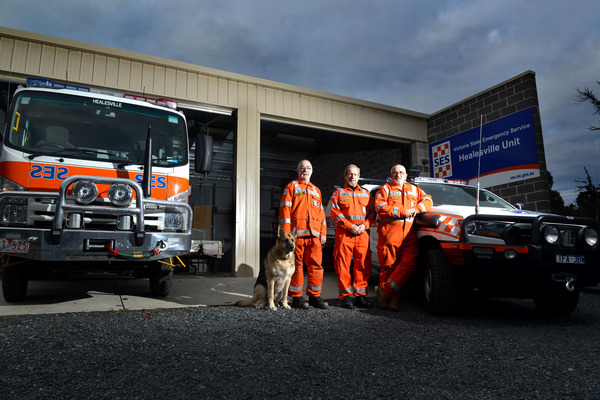
By Wendy Williamson
Local emergency services workers are eagerly anticipating the introduction of a new Victorian road rule aimed at keeping them safe.
From 1 July, drivers must slow to 40km/h when passing a stationary or slow-moving emergency vehicle responding to an emergency with flashing lights or a siren sounding.
The new rule applies to police, ambulance, SES, CFA and MFB vehicles with flashing lights or a siren.
It also applies to VicRoads Transport Safety Service vehicles with magenta flashing lights.
Drivers who flout the new road rule face a $277 fine or a court penalty of as much as $793.
“Fantastic!” was the reaction of Emerald SES Unit Controller Ben Owen.
“We have a lot of near-misses. Some drivers just don’t slow down, despite the signs we put up,” Mr Owen said.
After passing the vehicle, drivers should not increase speed again until reaching a safe distance from the scene, so that emergency workers can do their job without fear of being hit by passing traffic.
It is because of the number of emergency workers killed or injured on Victorian roads after being struck by passing vehicles or debris that the State Government is introducing the new road rule.
In a recent survey almost one in five emergency services workers said they’d had four or more “near misses” while stopped on the roadside over the past three years.
“I’ve seen plenty myself,” Mr Owen said. “We are out in the worst of the weather, when it is foggy, wet, windy and/or dark, and it can be hard for drivers to see us.”
He added that he would like to see some signage on the back of emergency vehicles reminding drivers of the need to slow down.
Healesville SES Controller Geoff Stott said that most drivers were courteous, but hopefully the new rule would encourage even the small percentage of aggressive drivers who refuse to follow SES directions to slow down.
“We can be dealing with a tree down across the road around a bend or two. Using chainsaws and with earmuffs on it can be hard to hear the traffic. Knowing the drivers have to slow down when they see the flashing lights will give us peace of mind,” he said.
The changes are the result of extensive consultation with Victoria Police, Ambulance Victoria, Metropolitan Fire Brigade, the Country Fire Authority, WorkSafe, Emergency Management Victoria, Department of Justice and Regulation, the Transport Accident Commission and RACV.
Minister for Roads and Road Safety Luke Donnellan explained: “Emergency services workers are telling us that they feel in danger while they’re doing their job – we’ve listened to them and made these changes to protect the people who are out there protecting the community.
“Most people already do the right thing and slow down when we see flashing lights ahead, but this new rule will make sure that everyone passes at a safe speed.”
Minister for Health and Ambulance Services Jill Hennessy added: “Our emergency workers have stressful and demanding jobs, protecting us when we are at our most vulnerable. We’re making these changes so they can do their job without fear of being injured or killed by a passing vehicle.
“It’s a simple message – when you see flashing lights ahead slow to 40 to keep our emergency workers safe. It might mean you arrive at your destination a little later, but it could save a life.”






